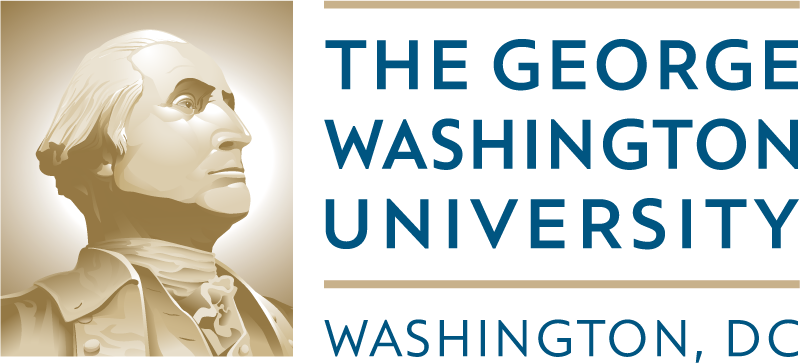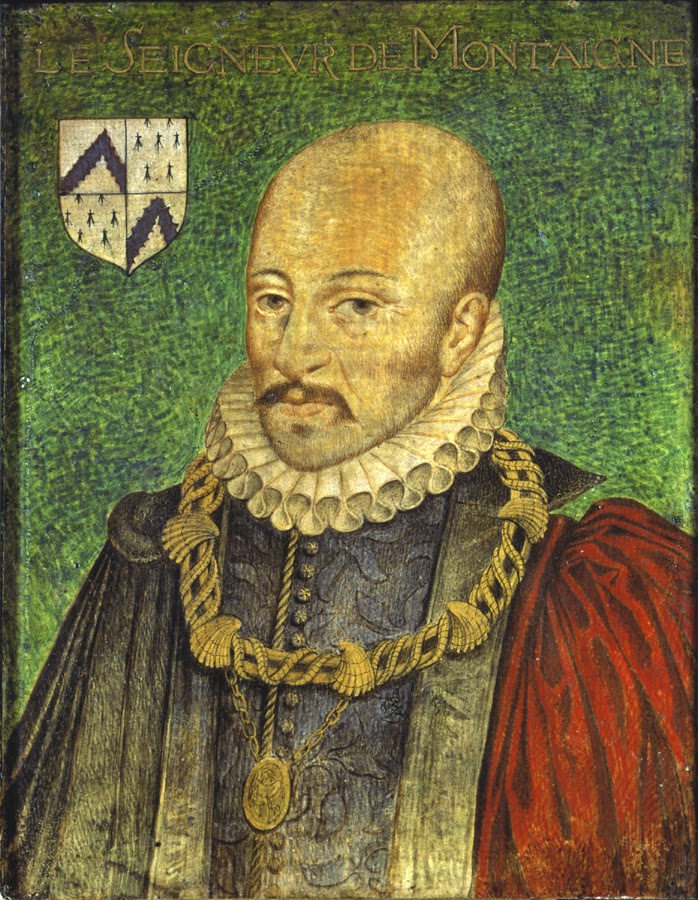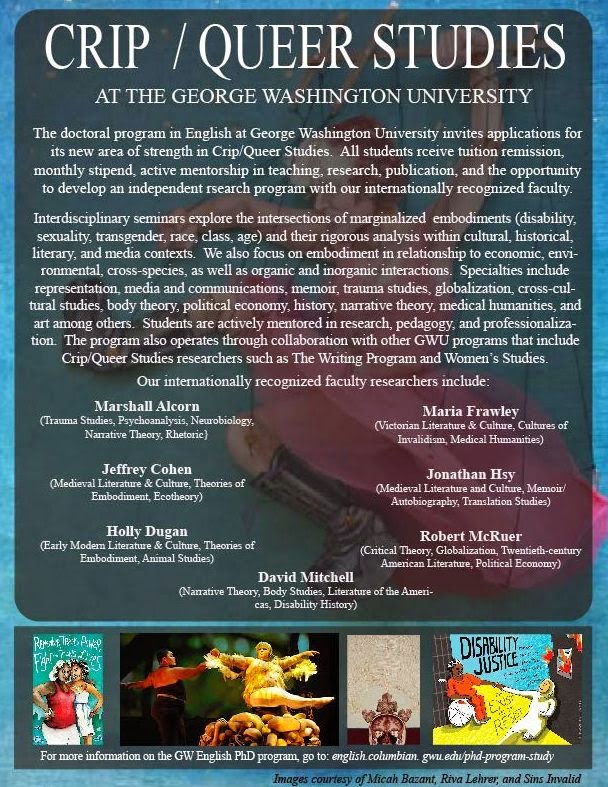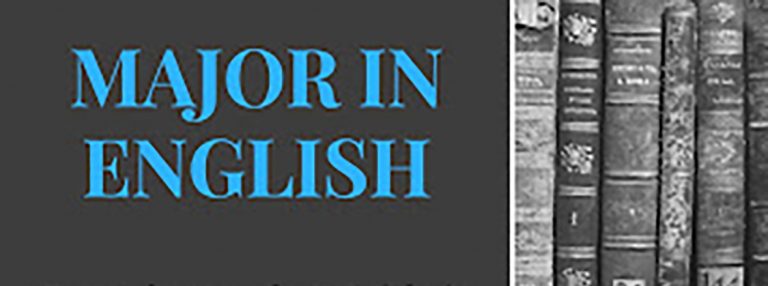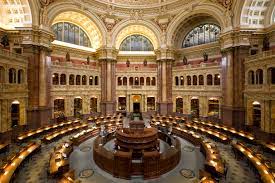Folger Seminar on Books and Early Modern Culture
In partnership with the Folger Shakespeare Library, the George Washington University is pleased to offer a new seminar on Books and Early Modern Culture.
The seminar is a one of a kind experience, offering undergraduates the chance to have reader’s privileges at the library and to utilize its world famous collection of Renaissance books.
The seminar will be launched this fall, and we hope to offer it every year henceforth for a select number of ambitious students. We hope they will find it a once in a lifetime experience that will deepen their knowledge and open new horizons.
——————–
ENGL/HIST 701.80: Folger-GW Undergraduate Research Seminar
Books and Early Modern Culture
Folger Shakespeare Library, Deck A Seminar Room
Dr. Sarah Werner
Course description
The purpose of this course is to introduce students to the history of books by focusing on books and early modern culture. By learning about how books were made and how books were used, students will gain a clearer appreciation of how early modern culture was shaped by and was a shaping force in the development of books. The archival skills students learn in conducting this research will serve them in future research projects, and their understanding of the sociology of books will refine their understanding of the early modern period and the roles that books played in later periods.
Course thematics
As we will discuss during this course, the study of books and book history can be divided into three approaches: 1) books as objects; 2) books as a societal force; and 3) books as vehicles for text. This class will draw on each of these approaches during the semester. We will begin with an exploration of books as physical objects: how they were made and what we can learn from their physical presence. By learning about the physical labor that went into making books—how they were printed, how they were assembled, how they were bound—we will learn to recognize the physical traces that can lead us to a new understanding of how a particular book was used, what its impact might have been, and how it shapes the text it contains. After this introduction to books as objects, we will move on to examine the role that books played in early modern culture and the processes by which they were made available. Our examination will be guided by Robert Darnton’s notion of a “communication circuit” and will focus, in turn, on the relationships between printers, book sellers, readers, and authors. We will look at the processes by which the power of print has been harnessed and censored, explore how the growth of printed books shaped new audiences of readers, and consider what authorship meant during the early modern period. Two sessions will focus on subjects that are particularly fruitful in exploring the relationship between print and culture: Shakespeare and early modern Bibles. The final section of our course will consider books as vehicles for text. In some ways the opposite approach of focusing exclusively on the book as a material object, this approach will consider how books transmit (and shape) texts. We will use Gerard Genette’s notion of “paratext” to think about how the liminal shapes a text’s meaning, and will use Randall McLeod’s notion of “transformission” to explore how the medium of print and reproduction alters textual meaning. We will also explore the process of editing texts, and interrogate how early modern texts are reshaped as modern books by studying some of the theories behind modern editing and by working on our own transcriptions and studying instances of modern editions.
Grades
There will be five written papers assigned during this course, making up 90% of your final grade for this course (descriptions of the assignments and their percentage of the final grade are provided on the last page of this syllabus). Students will not be expected to write a long research paper for this course, although they will be able to use the skills and information they learn in this course to help them write research papers in other courses. Those students who will be writing theses in the spring semester will find that this course gives them a framework for beginning that research in the Folger’s collection. Late papers will not be accepted; should you anticipate a problem in meeting a deadline, you need to talk to me in advance of the deadline itself.
The remaining 10% of your final grade will be based on your class participation and the occasional archival exercises assigned during class. You must come to each and every class prepared for that day’s discussion. Because we meet only once a week, missing even one session will hinder your preparedness for the assignments and will stand in the way of your developing knowledge about early modern books.
Readings
Readings marked on the syllabus with an asterisk (*) are the primary readings for that day; other readings listed should be read as your time and interest allows. Most of the readings will be placed on reserve in Gelman’s library and placed on our course shelves at the Folger. There are two books you are responsible for either buying or checking out of one of the consortium libraries: Warren Chappell and Robert Bringhurst, A Short History of the Printed Word, Second Edition, Revised and Updated (Point Roberts, WA: Hartley and Marks, 1999); and Philip Gaskell, A New Introduction to Bibliography (Oxford: Clarendon P, 1972).
You will notice that the readings specified on the syllabus below consist nearly entirely of modern books about early modern books and book history. We will be working with early modern books in class and outside of class, and you will be provided with a bibliography of the books we have consulted in class. Students are always welcome to bring into the classroom particular books that they are interested in and would like to discuss. And students should avail themselves of the resources in the Folger, both of our collection of rare materials, but also of our range of experts in the field. The library’s curators and staff will help you find your way through our collection.
Finally, readings in the course will be supplemented by appearances of the guest faculty, identified on the syllabus below, speaking on a range of topics such as using bibliographic evidence to date materials, to the history of book illustration, to the rise of 18th-century biblical satire and the circulation of 19th-century gift books.
The history of books is a broad and fascinating area of research. There are many fields of inquiry that this course will not address: libraries, censorship, mapmaking, and bindings are just a few of the topics that could be added to an exploration of early modern culture and books. But this course will model a variety of approaches to the field and will give students a range of tools that they can use in their independent research and in future courses.
September 7: Orientation
Advance Reading: Bradin Cormack and Carlo Mazzio, “Use, Misuse and the Making of Book Theory: 1500-1700” in Book Use, Book Theory: 1500-1700, eds Cormack and Mazzio (Chicago: U Chicago Library, 2005), 1-37.
Tour of Library with Betsy Walsh, Head of Reader Services, explanation of Library procedures, and presentation on book handling practices with Frank Mowery, Head of Conservation
September 14: Preface: What is book history?
* Robert Darnton, “What is the History of Books?” in The Kiss of Lamourette: Reflections in Cultural History (New York & London: Norton, 1990), 107-35. [originally published in Daedalus 111:3 (1982): 65-83.]
* D.F. McKenzie, “The Book as an Expressive Form” in Bibliography and the Sociology of Texts (Cambridge: Cambridge UP, 1999), 9-30. [originally given as a Panizzi lecture at the British Library, 1985]
* Roger Chartier, “Labourers and Voyagers: From the Text to the Reader” Diacritics 22:2 (Summer 1992): 49-61.
* Adrian Johns, “The Book of Nature and the Nature of the Book” in The Nature of the Book: Print and Knowledge in the Making (Chicago: U Chicago P, 1998), 1-57 (esp. 1-40).
Book display with Dr Steven Galbraith, Curator of Books
Tour of Conservation lab
September 21: Introduction: Incunabula: the first printed books
* Warren Chappell and Robert Bringhurst, “Chapter 1: Prologue to Discovery” and “Chapter 4: Incunabula: 1440-1500” in A Short History of the Printed Word, Second Edition, Revised and Updated (Point Roberts, WA: Hartley and Marks, 1999), 3-21 and 65-92.
* Christopher de Hamel, “The Gutenberg Bible” in The Book: A History of The Bible (London: Phaidon, 2001), 190-215.
John L. Flood, “‘Volentes sibi comparare infrascriptos libros impressos …’: Printed Books as a Commercial Commodity in the Fifteenth Century” in Incunabula and Their Readers: Printing, Selling and Using Books in the Fifteenth Century, ed. Kristian Jensen (London: British Library, 2003), 139-52.
Lucien Febvre and Henri-Jean Martin, “Preliminaries: The Introduction of Paper into Europe” in The Coming of the Book: The Impact of Printing 1450-1800, trans. David Gerard (London and New York: Verso, 1976), 29-54. [orig. L’Apparition du livre, 1958]
Guest faculty: Steve Galbraith: Incunabula from the Folger’s collection
view in class: The Making of a Renaissance Book. Dir. Dana Atchely, prod. American Friends of the Plantin-Moretus Museum (Antwerp). 16 mm film, 22 min., 1969. Rereleased by Book Arts Press, VHS, 2000.
September 28: Part I: Books as objects: overview of physical aspects of early modern books
* Warren Chappell and Robert Bringhurst, “Chapter 3: Type: Cutting and Casting,” “Chapter 5: The Sixteenth Century,” and “Chapter 6: The Seventeenth Century” A Short History of the Printed Word, Second Edition, Revised and Updated (Point Roberts, WA: Hartley and Marks, 1999), 43-64, 93-122, and 123-57.
Stephen Orgel, “Textual Icons: Reading Early Modern Illustrations” in The Renaissance Computer: Knowledge, Technology in the First Age of Print, eds Neil Rhodes and Jonathan Sawday (London and New York: Routledge, 2000), 59-94.
Guest faculty: Dr Erin Blake, Curator of Art, Folger Shakespeare Library: Introduction to early modern book illustration
October 5: Books as objects: type and presses
Class to be held at Hill Press, with Steven Heaver
* Philip Gaskell, A New Introduction to Bibliography (Oxford: Clarendon P, 1972). “Composition” pp. 40-56; “Imposition” pp. 78-117 [on format, either Gaskell pp. 80-107 or Greetham pp. 112-36 (see below); but Gaskell pp. 109-117 regardless]; “Presswork” pp. 118-141 [skim pp. 118-24].
D. C. Greetham, “Making the Text: Bibliography of Printed Books” in Textual Scholarship: An Introduction (New York and London: Garland, 1994), 77-151, esp. 112-36 [as replacement for Gaskell on format, above]; “Describing the Text: Descriptive Bibliography” pp153-68
useful videos illustrating aspects of punchcutting, typecasting, and understanding format; these can be watched at the Folger, but are not required viewing:
From Punch to Printing Type: The Art and Craft of Hand Punchcutting and Typecasting, dir. Peter Herdrich, prod. Book Arts Press, 1985. VHS, 45 min.
The Anatomy of a Book, I: Format in the Hand-Press Period, dir. Peter Herdrich, written by Terry Belanger, prod. Viking Productions, distrib. Book Arts Press, 1991. VHS, 30 min.
How to Operate a Book, dir. Peter Herdrich, written by Terry Belanger and Gary Frost, prod. Book Arts Press, 1986. VHS 30 min.
October 12: Books as objects: vellum, paper, watermarks
Assignment due in class: Book history and your field
Guest faculty: Dr Carter Hailey, College of William and Mary: Using bibliographic evidence: collating, watermarks, ink
Philip Gaskell, “Paper” in A New Introduction to Bibliography (Oxford: Clarendon P, 1972), 57-77 (esp. 57-66).
October 19: Part II: Books and early modern culture: printing and selling
* Peter W. M. Blayney, “The Publication of Playbooks” in A New History of Early English Drama, eds John D. Cox and David Scott Kastan (New York: Columbia UP, 1997), 383-422.
* Alan B. Farmer and Zachary Lesser, “The Popularity of Playbooks Revisited,” Shakespeare Quarterly 56 (2005): 1-32.
* John Barnard, “Introduction” in The Cambridge History of the Book in Britain, Vol. IV: 1557-1695, eds John Barnard and D. F. McKenzie, with Maureen Bell (Cambridge: Cambridge UP, 2002), 1-25.
Peter W. M. Blayney, “John Day and the Bookshop That Never Was” in Material London, ca. 1600, ed. Lena Cowen Orlin (Philadelphia: U Pennsylvania P, 2000), 322-43.
M. A. Shaaber, “The Meaning of the Imprint in Early Printed Books,” The Library 24 (1944): 120-41.
The debate between Blayney and Farmer and Lesser about playbook popularity continues in this series of responses:
Peter W. M. Blayney, “The Alleged Popularity of Playbooks,” Shakespeare Quarterly 56 (2005): 33-50.
Alan B. Farmer and Zachary Lesser, “Structures of Popularity in the Early Modern Book Trade,” Shakespeare Quarterly 56 (2005): 206-13.
Guest faculty: Professor Ann Hawkins, Texas Tech University: 19th-century giftbooks
October 26: Books and culture: Shakespeare
* Gary Taylor, “Making Meaning Marketing Shakespeare 1623” in From Performance to Print in Shakespeare’s England, eds Peter Holland and Stephen Orgel (London: Palgrave Macmillan, 2006), 55-72.
* David Scott Kastan, “From Contemporary to Classic; Or, Textual Healing” in Shakespeare and the Book (Cambridge: Cambridge UP, 2001), 79-110.
* Thomas L. Berger, “‘Opening Titles Miscreate’: Some Observations on the Titling of Shakespeare’s ‘Works’” in The Margins of the Text, ed. D. C. Greetham (Ann Arbor: U Michigan P, 1997), 155-72.
November 2: Books and early modern culture: readers
Assignment due in class: Your book’s readers
* Robert Darnton, “First Steps Toward a History of Reading” in The Kiss of Lamourette: Reflections in Cultural History (New York and London: Norton, 1990), 154-87. [orig. Australian Journal of French Studies 23 (1986): 5-30.]
* Heidi Brayman Hackel, “The ‘Great Variety’ of Readers and Early Modern Reading Practices” in A Companion to Shakespeare, ed. David Scott Kastan (Oxford: Blackwell, 1999), 139-57.
* William H. Sherman, “What Did Renaissance Readers Write in Their Books?” in Books and Readers in Early Modern England: Material Studies, eds Jennifer Andersen and Elizabeth Sauer (Philadelphia: U Pennsylvania P, 2002), 119-37.
Heidi Brayman Hackel, “Consuming Readers: Ladies, Lapdogs, and Libraries” in Reading Material in Early Modern England: Print, Gender, and Literacy (Cambridge: Cambridge UP, 2005), 196-255.
Guest faculty: Dr Heather Wolfe, Curator of Manuscripts, Folger Shakespeare Library: Manuscript and print culture: Mary Wroth
November 9: Books and early modern culture: Bibles and religion
Guest faculty: Professor Michael Suarez, S.J., Fordham and Oxford
* Christopher de Hamel, “Bibles of the Protestant Reformation” in The Book: A History of The Bible (London: Phaidon, 2001), 216-45.
* B. J. McMullin, “The Bible Trade” in The Cambridge History of the Book in Britain, Volume IV: 1557-1695, eds John Barnard and D. F. McKenzie (Cambridge: Cambridge UP, 2002), 455-73.
* Peter Stallybrass, “Books and Scrolls: Navigating the Bible” in Books and Readers in Early Modern England: Material Studies, eds Jennifer Andersen and Elizabeth Sauer (Philadelphia: U Pennsylvania P, 2002), 42-79.
Jean-François Gilmont, “Protestant Reformations and Reading” in A History of Reading in the West, eds Guglielmo Cavallo and Roger Chartier, trans. Lydia G. Cochrane (Amherst: U Massachusetts P, 1999), 213-37.
Dominique Julia, “Reading and the Counter-Reformation” in A History of Reading in the West, eds Guglielmo Cavallo and Roger Chartier, trans. Lydia G. Cochrane (Amherst: U Massachusetts P, 1999), 238-68.
November 16: Books and early modern culture: authors
Assignment due in class: Your book’s author
* Michel Foucault, “What is an Author?” in Textual Strategies: Perspectives in Post-Structuralist Criticism, ed. Josué V. Harari (Ithaca, NY: Cornell UP, 1979), 141-60.
* Roger Chartier, “Figures of the Author” in The Order of Books: Readers, Authors, and Libraries in Europe between the Fourteenth and Eighteenth Centuries, trans. Lydia G. Cochrane (Cambridge, UK: Polity P, 1994), 25-60.
* Maureen Bell, “Women Writing and Women Written” in The Cambridge History of the Book in Britain, Volume IV: 1557-1695, eds John Barnard and D. F. McKenzie, with Maureen Bell (Cambridge: Cambridge UP, 2002), 431-51.
Wendy Wall, “Dancing in a Net: The Problems of Female Authorship” in The Imprint of Gender: Authorship and Publication in the English Renaissance (Ithaca and London: Cornell UP, 1993), 279-340.
Guest faculty: Professor Leah Chang, The George Washington University: Louise Labé and female authorship
November 21, 5:00 pm: Assignment due: Your book’s biography
November 23: NO CLASS—Thanksgiving Break
November 30: Part III: Books as vehicles for text: paratext and “transformission”
* Gerard Genette, “Introduction” in Paratexts: Thresholds of Interpretation, trans. Jane E. Lewin (Cambridge: Cambridge UP, 1997; orig. Seuils 1987), 1-15.
* Evelyn B. Tribble, “Authority, Control, Community: The English Printed Bible Page from Tyndale to the Authorized Version” in Margins and Marginality: The Printed Page in Early Modern England (Charlottesville and London: University Press of Virginia, 1993), 11-56.
* Random Clod [pseud. Randall McLeod], “Information upon Information” TEXT 5 (1991): 241-81.
Randall Anderson, “The Rhetoric of Paratext in Early Printed Books” in The Cambridge History of the Book in Britain, Volume IV: 1557-1695, eds John Barnard and D. F. McKenzie (Cambridge: Cambridge UP, 2002), 636-44.
Gabriel Egan, “‘As it was, is, or will be played’: Title-pages and the Theatre Industry to 1610” in From Performance to Print in Shakespeare’s England, eds Peter Holland and Stephen Orgel (London: Palgrave Macmillan, 2006), 92-110.
Zachary Lesser, “Typographic Nostalgia: Play-Reading, Popularity, and the Meanings of Black Letter” in The Book of the Play: Playwrights, Stationers, and Readers in Early Modern England, ed. Marta Straznicky (Amherst and Boston: U Massachusetts P, 2006), 99-126.
December 7: Books as vehicles: editing early modern texts
* Robert D. Hume, “The Aims and Uses of ‘Textual Studies’” PBSA 99:2 (2005): 197-230.
* Stephen Orgel, “What Is a Text?” and “What Is an Editor?” in The Authentic Shakespeare and Other Problems of the Early Modern Stage (New York and London: Routledge, 2002), 1-6 and 15-20. [orig. Research Opportunities in Renaissance Drama 24 (1981) and Shakespeare Studies 24 (1996)]
* Gary Taylor, “The Renaissance and the End of Editing” in Palimpsest: Editorial Theory in the Humanities, eds George Bornstein and Ralph G. Williams (Ann Arbor: U Michigan P, 1993), 121-49.
December 14, 5:00 pm: Assignment due: Early modern texts as modern books
Assignment Descriptions: (longer guidelines will be distributed during the semester)
For all the assignments below, you will want to use an early modern book of your choice (assuming that it is in the Folger collection and with which you can work closely). Your faculty advisor and the staff at the Library (especially Dr Werner) can help you find appropriate books to examine. You may use the same book for all assignments, or you may switch books during the semester. If done properly, the assignments on the book’s readers and author should be able to be incorporated into writing the book’s biography.
Late papers will not be accepted; should you anticipate a problem in meeting a deadline, you need to talk to me in advance of the deadline itself.
Your field and book history (500-800 words; Due October 12; 10% of final grade):
Identify some aspect of book history that is important for your research or primary field of interest. You do not need to know the answers to your queries, only to identify them as areas of interest and to explain why they are of interest.
Your book’s readers (1000-1500 words; Due November 2; 10% of final grade):
Where are the signs of a reader in your book? What are those signs? Are they signs of a specific, individual reader, or are they signs of a projected audience? If both, what is the relationship between that specific reader and the imagined audience? What is the relationship between the author and the reader(s)? Is there evidence of the book having been actually read?
Your book’s author (1000-1500 words; Due November 16; 10% of final grade):
How does your book identify and construct its author(s)? Is there a name on the titlepage? Is it pseudonymous? Anonymous? Is the author identified in other ways, such as through prefatory materials, or the use of the first person in the text?
Your book’s biography (2000-2500 words; Due November 21; 30% of final grade):
Write the biography of your book. Start from the book’s creation (who wrote it, who put up the money for its publication, who printed it) and move on through the history of the book (where it was sold, which owners (if any) can be identified, what uses were made of the book, what changes were made to the book’s physical structure) on up to the present day (how did it come into the Folger’s collection, how is it catalogued). Depending on the popularity of your book, you could address familial relationships (reprints, subsequent early modern editions, subsequent editions), travel history (translations), etc.
Early modern texts as modern books (2000-2500 words [Part Two]; Due December 14; 30% of final grade):
Part One: Transcribe the title page and the first page of text of one of the early modern texts central to your research;
Part Two: Choose one of the two options below:
a) Find a modern (19th, 20th, or 21st century) edition of your book (in either codex or hypertext form) and describe how that book constructs the text (its use, its readers, etc.).
b) Compare your book with its equivalent on microfilm or EEBO and describe how the copy differs from the original (how is the experience of reading them different, what is the difference between the two impressions and the two material objects, what is lost and/or what is gained by reading the text in this other form?).
